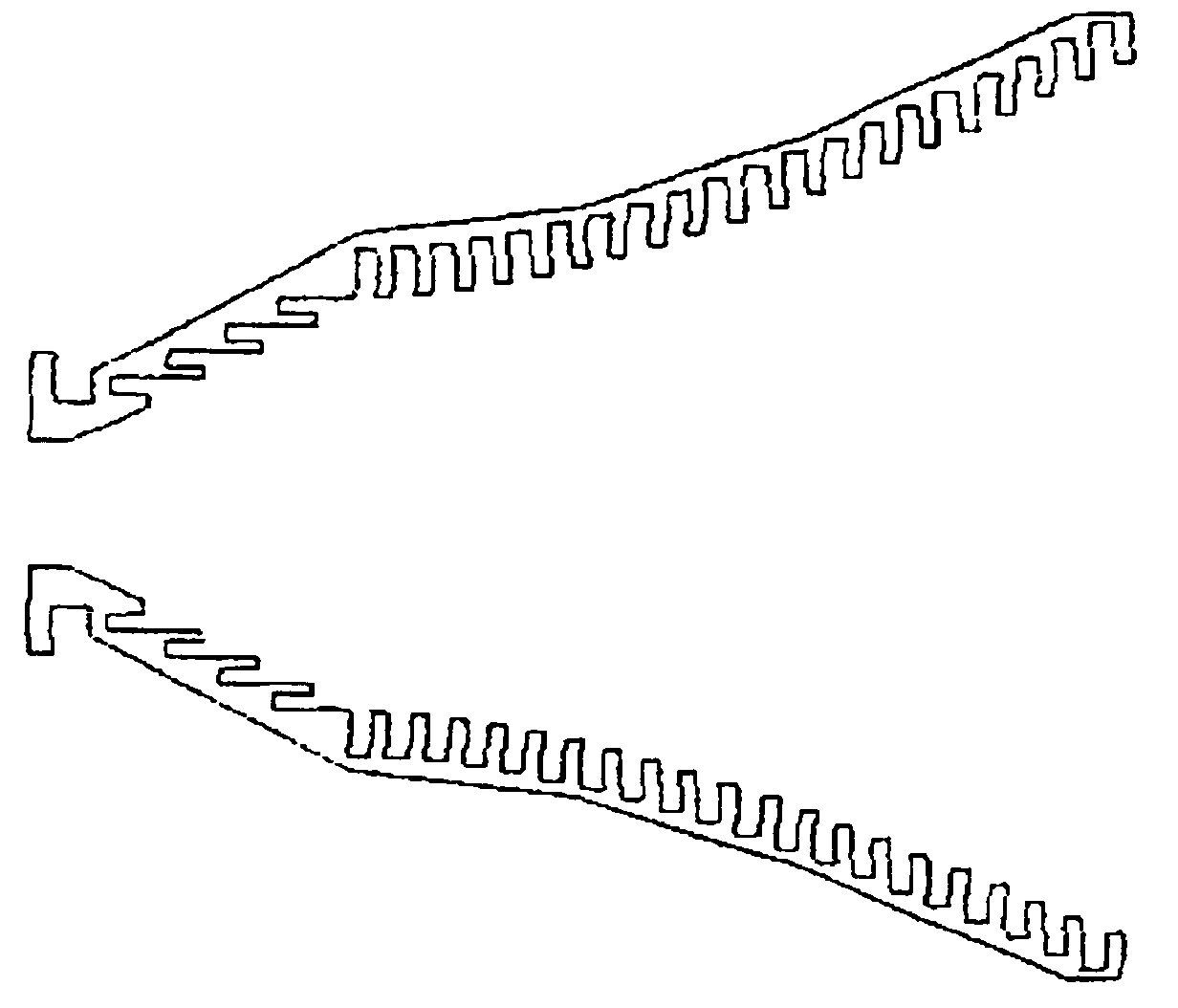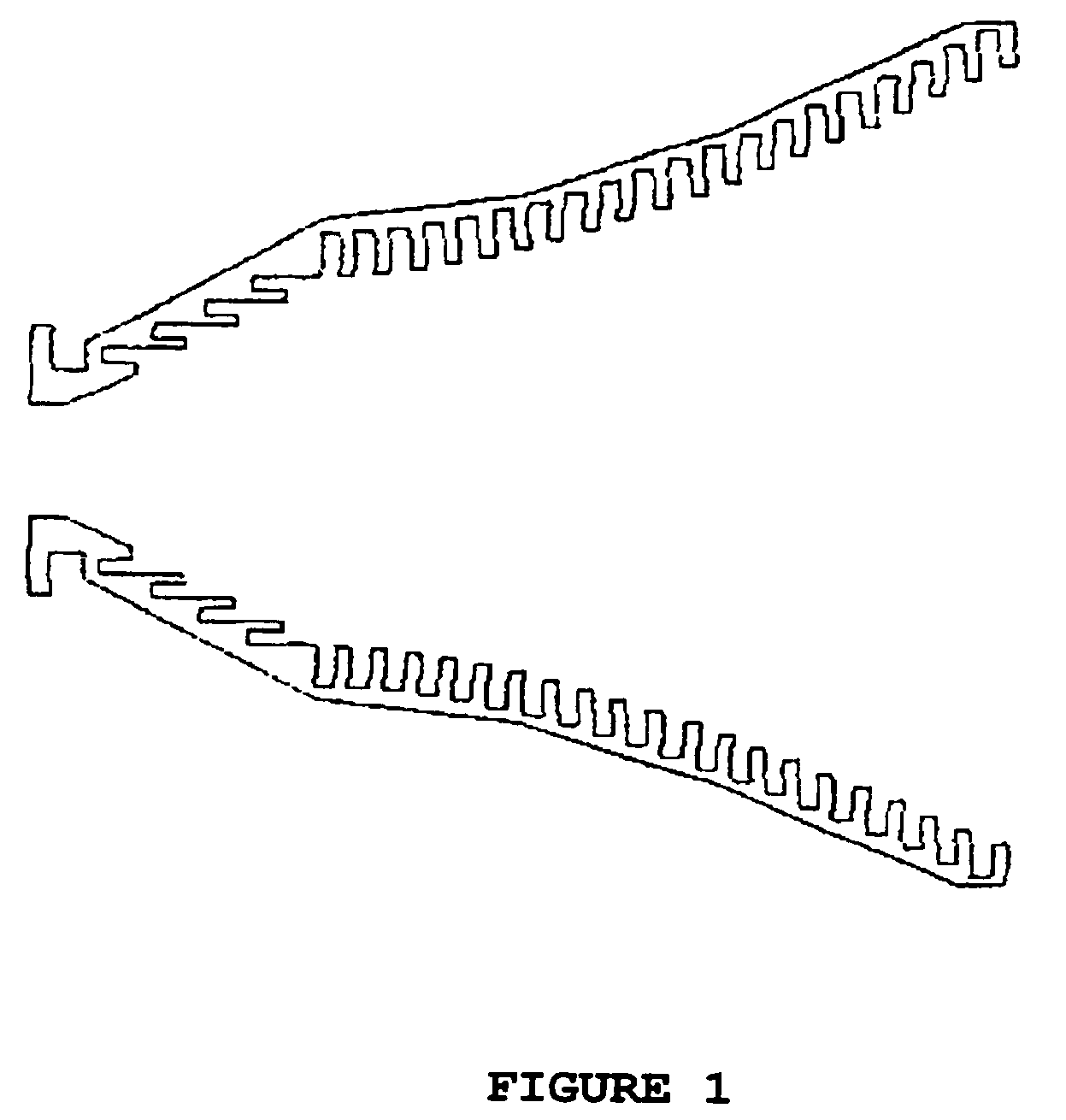Horn antenna combining horizontal and vertical ridges
a technology of horizontal and vertical ridges and horn antennas, which is applied in the direction of antennas, waveguide horns, electrical devices, etc., can solve the problems of reducing the performance of the antenna, affecting the radiation performance of the first section, and increasing the application requirements of the application. to achieve the effect of improving the radiation characteristics of the first section
- Summary
- Abstract
- Description
- Claims
- Application Information
AI Technical Summary
Problems solved by technology
Method used
Image
Examples
Embodiment Construction
[0021]To see a specific embodiment of this type of antennas, the monomode circular waveguide type, starting from the fundamental mode, TE11, is focused on.
[0022]As indicated, FIG. 1 shows a cross sectional view of this type of antennas, where horizontal corrugations (corrugations parallel to the axis of propagation), in this case defined according to a line, can be seen in the first part; and a second part with vertical corrugations (corrugations transversal to the propagation) defined with, in this case, a Gaussian profile antenna section, can be seen.
[0023]The frequency of this specific design is f=9.65 GHz, and total antenna length is 194 mm (6.2 wavelengths, λ=c / f=31 mm, where c=3*10^8 is the speed of light in free space). The aperture radius is 11.7 mm, and the output radius is 81.2 mm.
[0024]The horizontal corrugations have a 5 mm period with a 2 mm tooth width and 7 mm depth. The vertical corrugations have a 7 mm period, a 3 mm tooth width and 8.8 mm depth.
[0025]The first sect...
PUM
 Login to View More
Login to View More Abstract
Description
Claims
Application Information
 Login to View More
Login to View More - R&D
- Intellectual Property
- Life Sciences
- Materials
- Tech Scout
- Unparalleled Data Quality
- Higher Quality Content
- 60% Fewer Hallucinations
Browse by: Latest US Patents, China's latest patents, Technical Efficacy Thesaurus, Application Domain, Technology Topic, Popular Technical Reports.
© 2025 PatSnap. All rights reserved.Legal|Privacy policy|Modern Slavery Act Transparency Statement|Sitemap|About US| Contact US: help@patsnap.com



